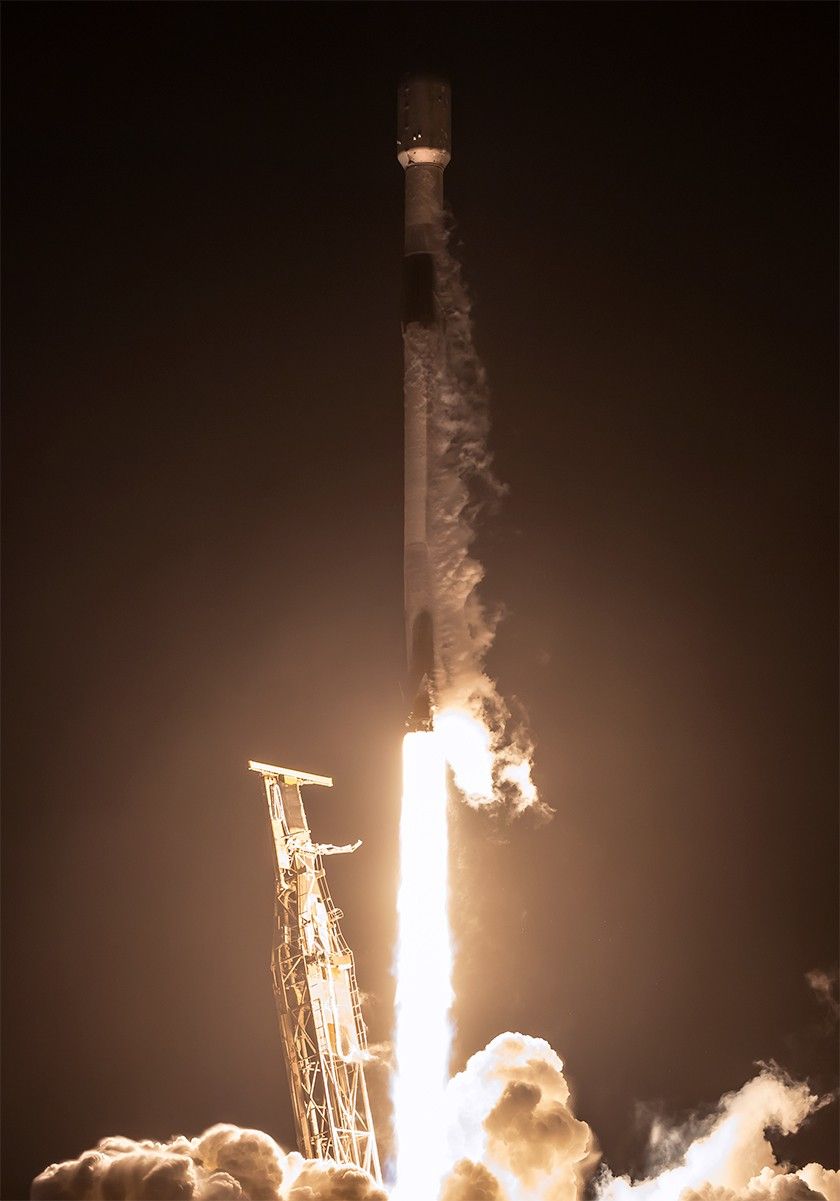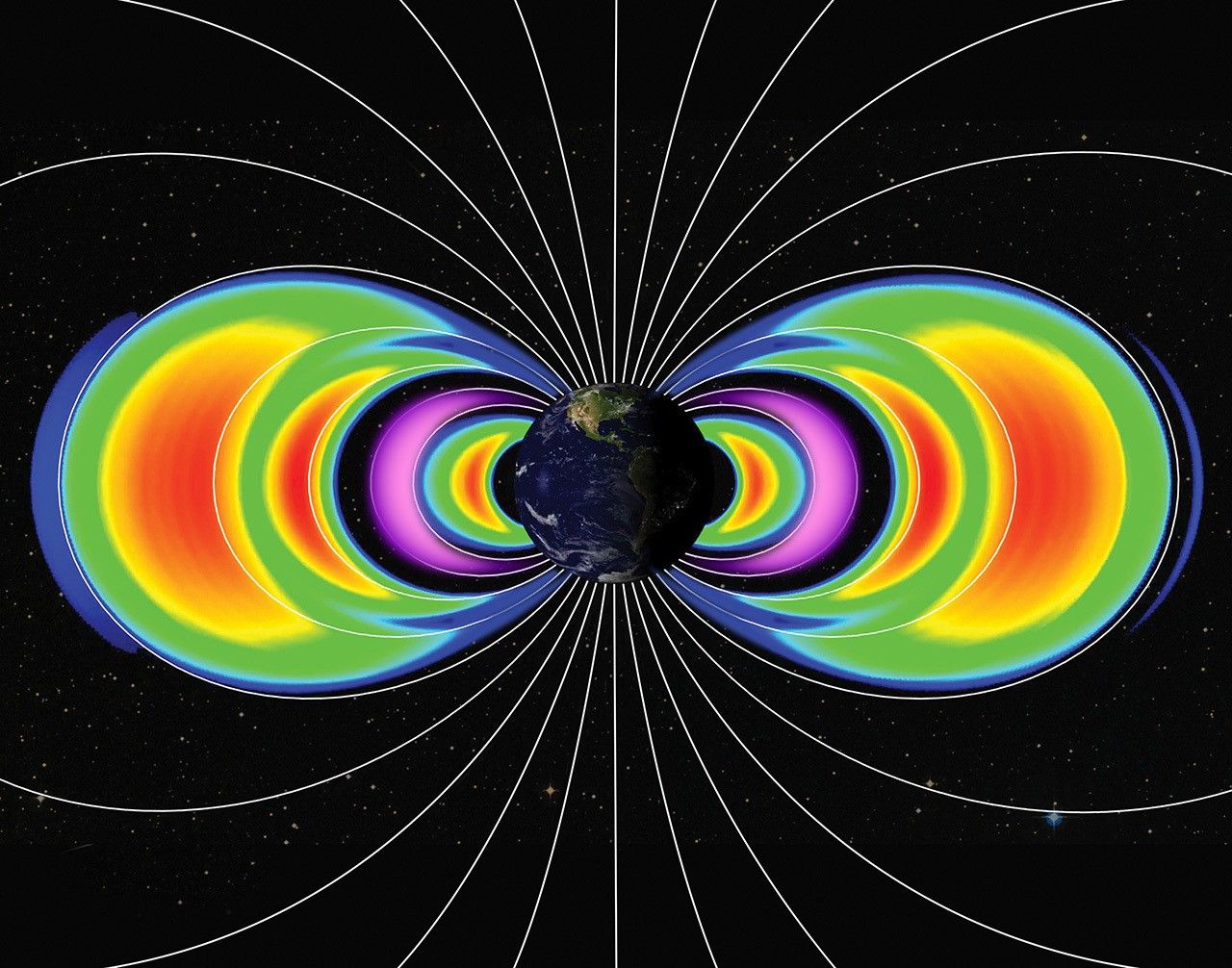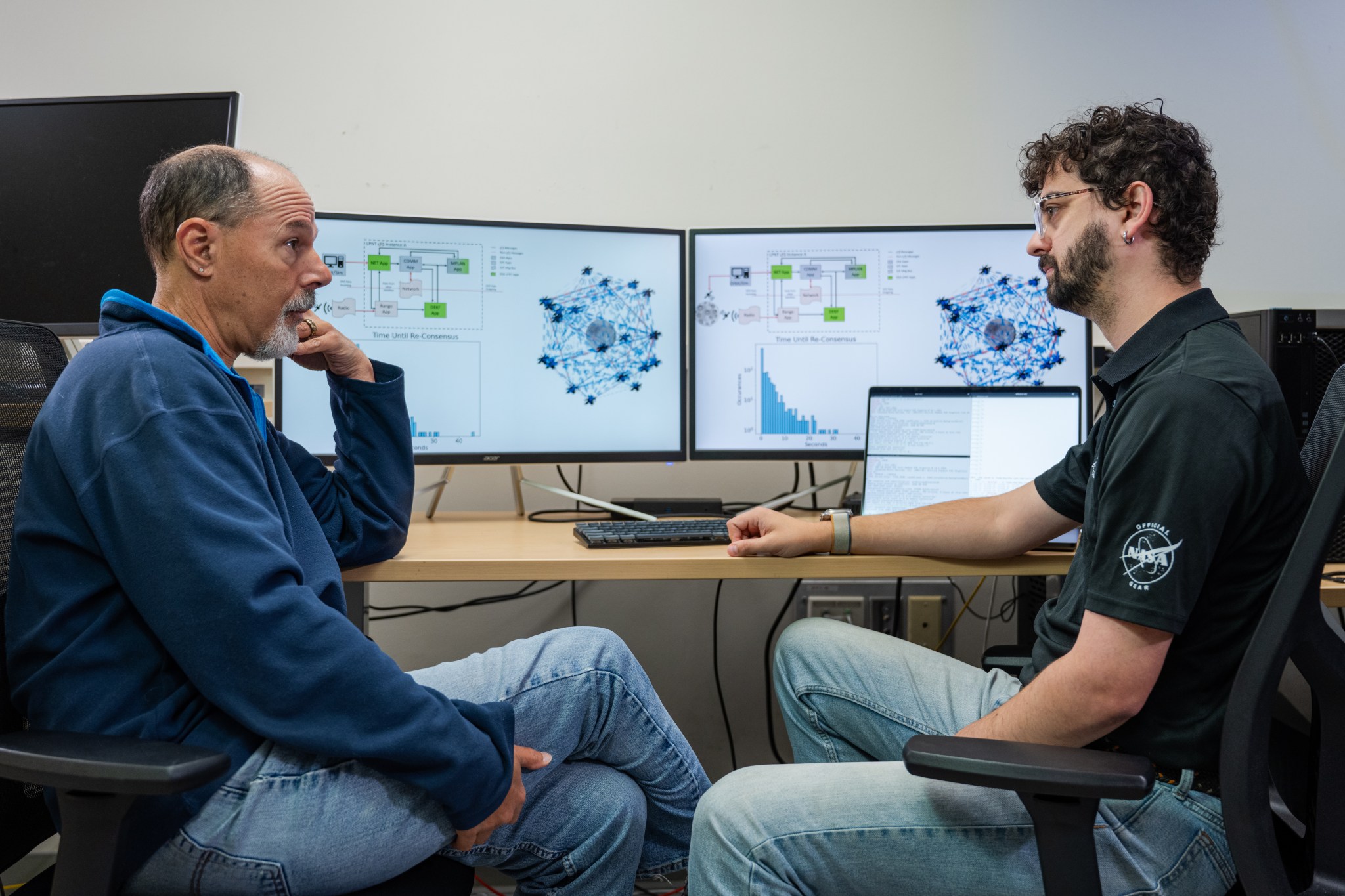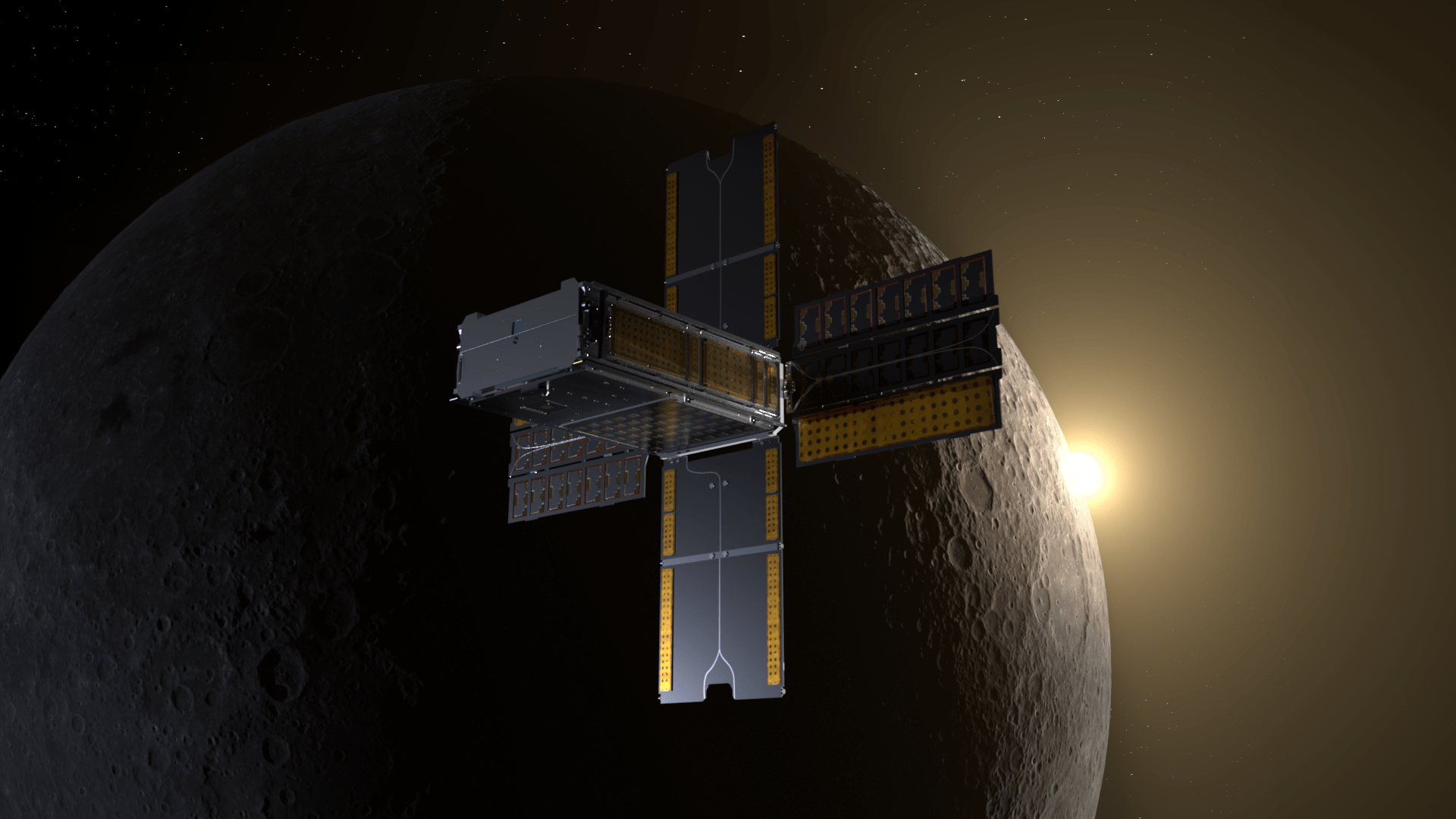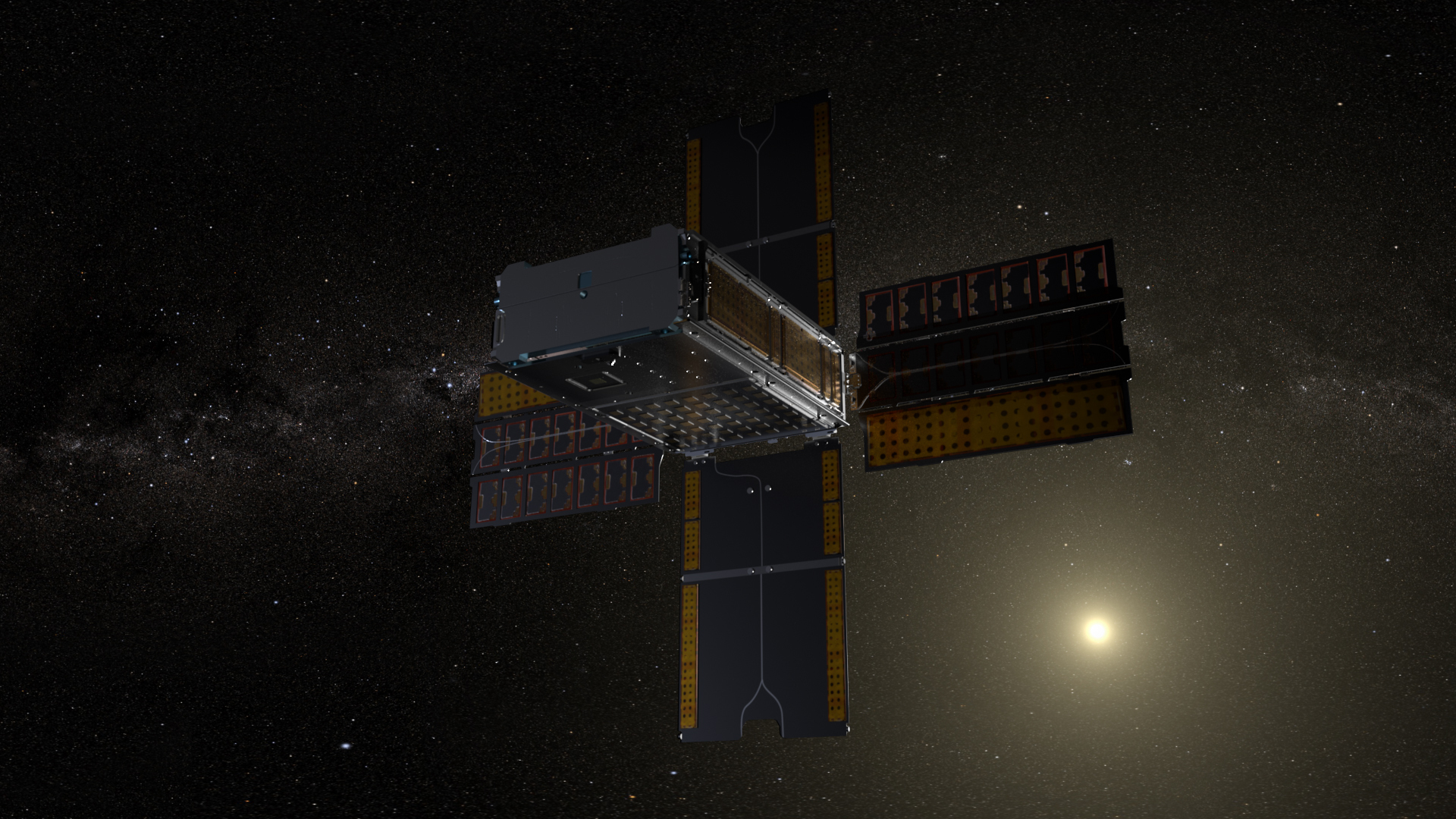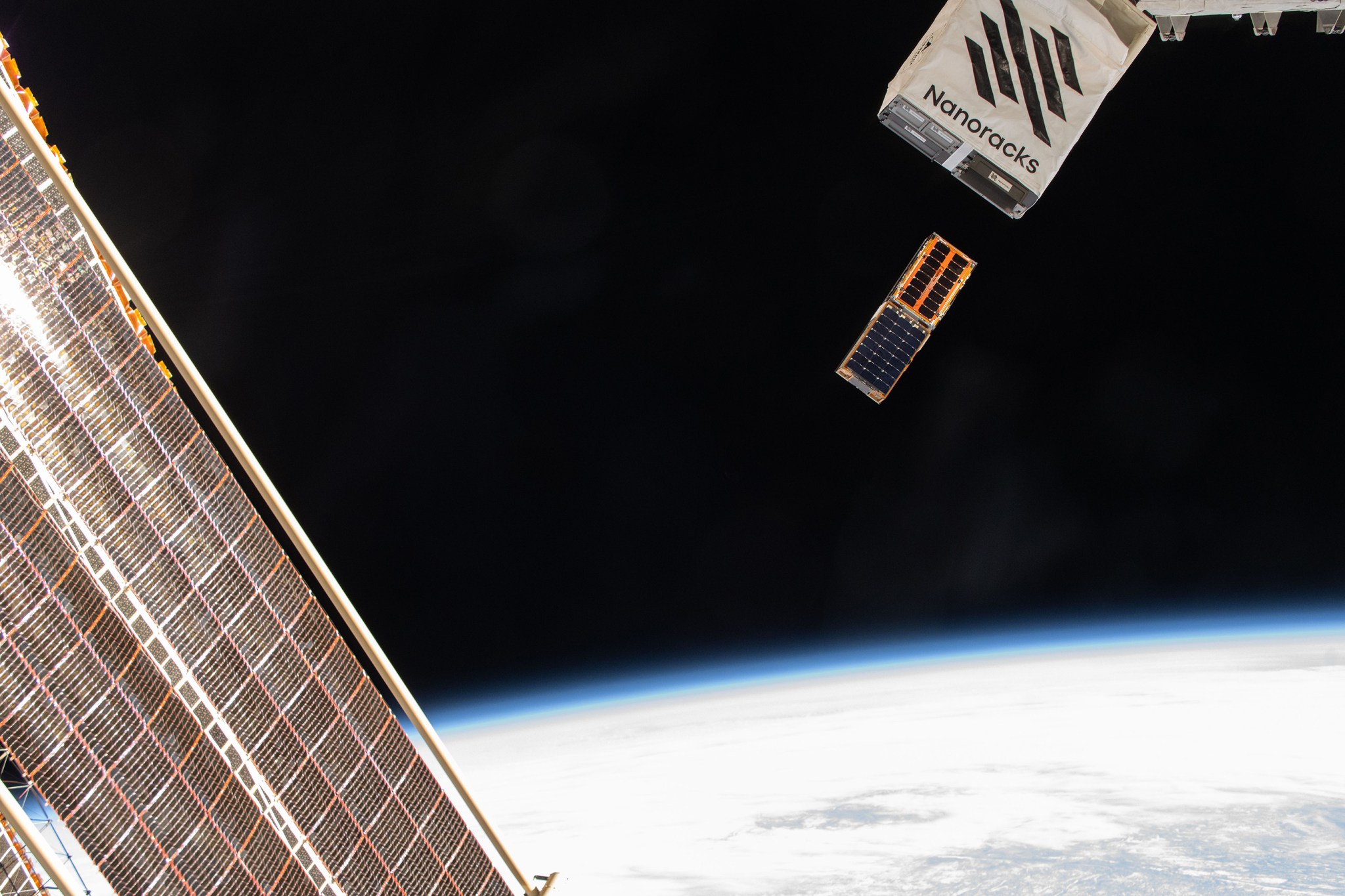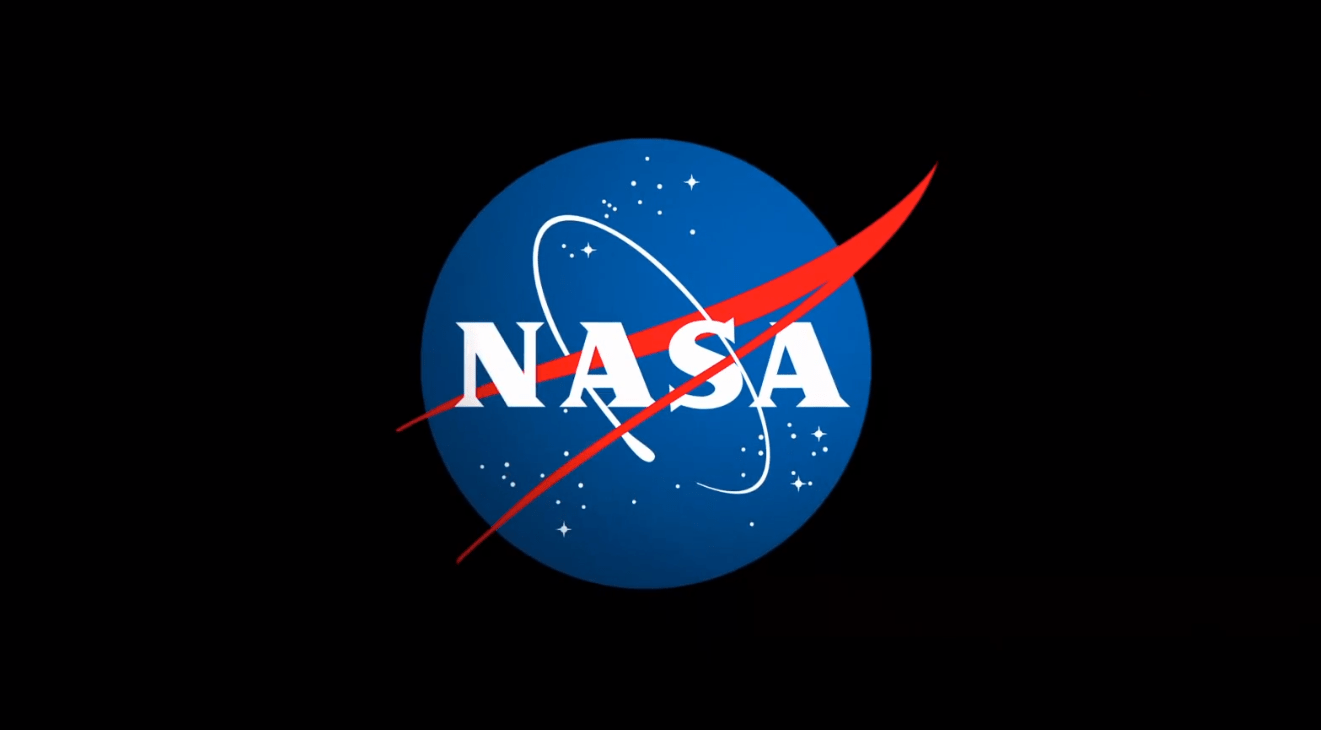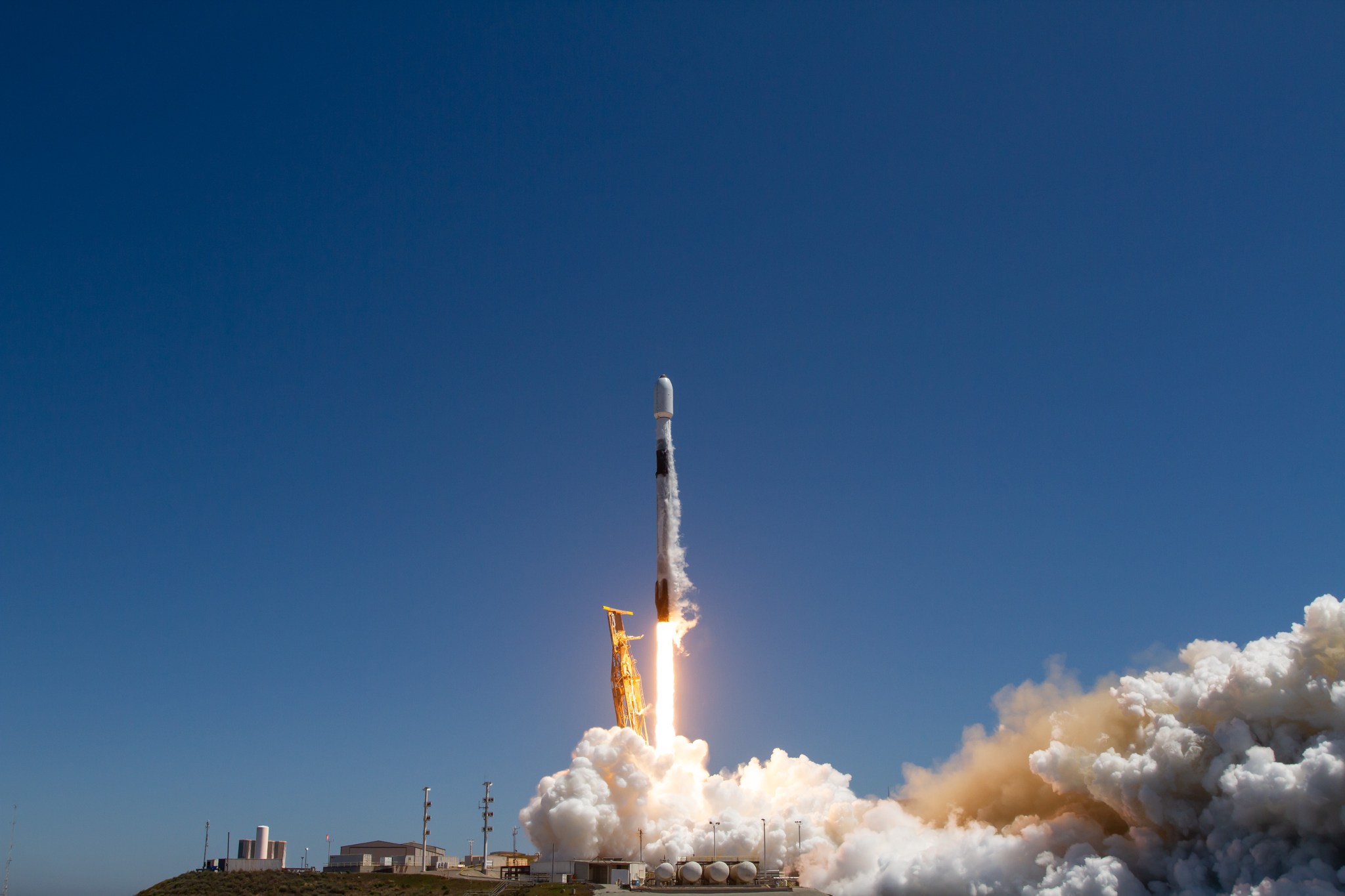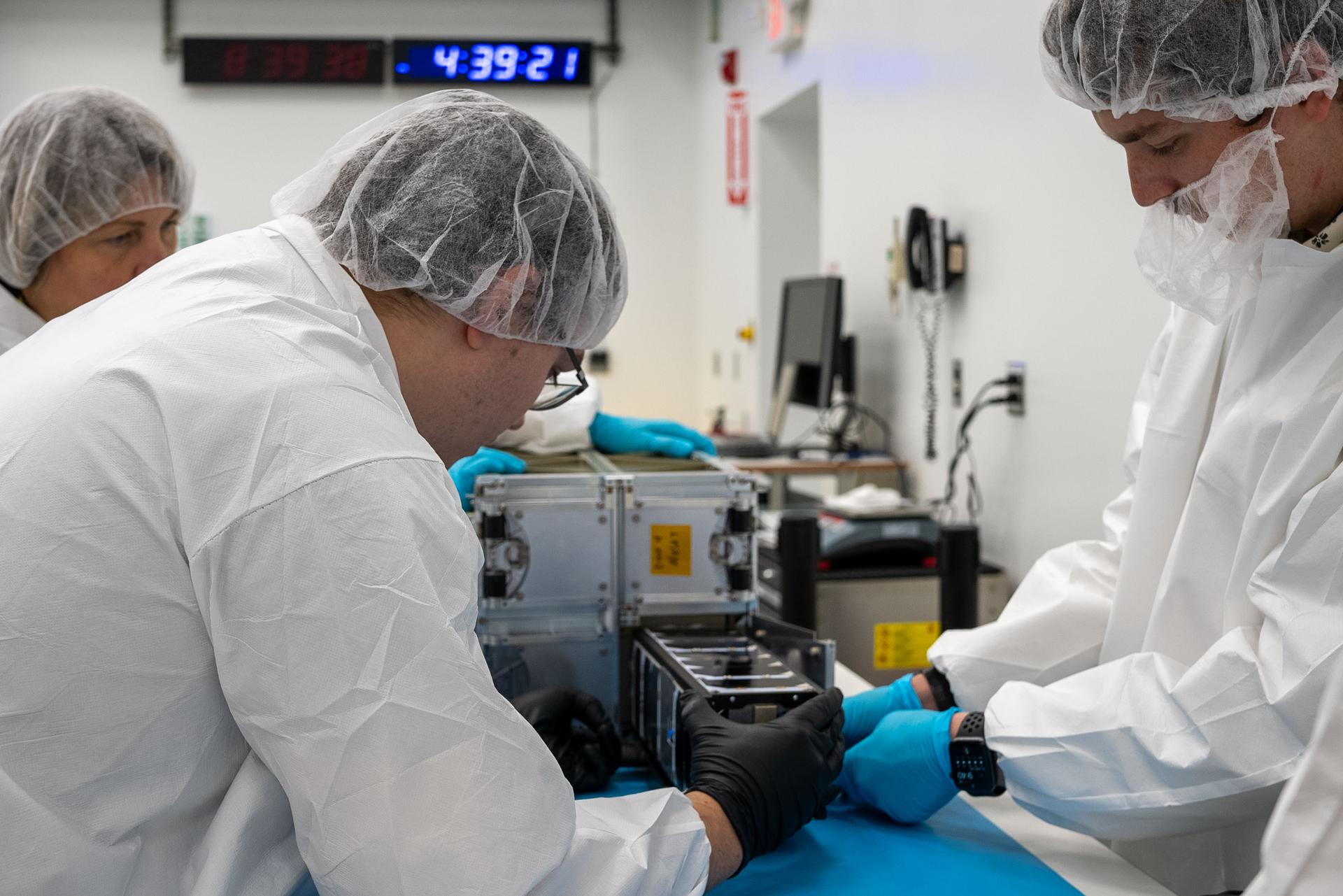A SpaceX Falcon 9 rocket lifts off from Vandenberg Space Force Base, carrying NASA’s EZIE spacecraft into orbit. SpaceX Under the nighttime California sky, NASA’s EZIE (Electrojet Zeeman Imaging Explorer) mission launched aboard a SpaceX Falcon 9 rocket at 11:43 p.m. PDT on March 14. Taking off from Vandenberg Space Force Base near Santa Barbara, the EZIE mission’s trio of small satellites will fly in a pearls-on-a-string configuration approximately 260 to 370 miles above Earth’s surface to map the auroral electrojets, powerful electric currents that flow through our upper atmosphere in the polar…
Read MoreTag: CubeSats
NASA CubeSat Finds New Radiation Belts After May 2024 Solar Storm
5 min read NASA CubeSat Finds New Radiation Belts After May 2024 Solar Storm Key Points The May 2024 solar storm created two new temporary belts of high-energy particles surrounding Earth. Such belts have been seen before, but the new ones were particularly long lasting, especially the new proton belt. The findings are particularly important for spacecraft launching into geostationary orbits, which can be damaged as they traverse the dangerous belts. The largest solar storm in two decades hit Earth in May 2024. For several days, wave after wave of…
Read MoreNASA Demonstrates Software ‘Brains’ Shared Across Satellite Swarms
5 min read Preparations for Next Moonwalk Simulations Underway (and Underwater) Jeremy Frank, left, and Caleb Adams, right, discuss software developed by NASA’s Distributed Spacecraft Autonomy project. The software runs on spacecraft computers, currently housed on a test rack at NASA’s Ames Research Center in California’s Silicon Valley, and depicts a spacecraft swarm virtually flying in lunar orbit to provide autonomous position navigation and timing services at the Moon. NASA/Brandon Torres Navarrete Talk amongst yourselves, get on the same page, and work together to get the job done! This “pep…
Read MoreWhat is BioSentinel?
llustration of BioSentinel’s spacecraft flying past the Moon. NASA/Daniel Rutter Editor’s Note: This article was updated Nov. 20, 2024 shortly after BioSentinel’s mission marked two years of operation in deep space. Astronauts live in a pretty extreme environment aboard the International Space Station. Orbiting about 250 miles above the Earth in the weightlessness of microgravity, they rely on commercial cargo missions about every two months to deliver new supplies and experiments. And yet, this place is relatively protected in terms of space radiation. The Earth’s magnetic field shields space station crew from much of the…
Read MoreSail Along with NASA’s Solar Sail Tech Demo in Real-Time Simulation
Unable to render the provided source NASA invites the public to virtually sail along with the Advanced Composite Solar Sail System‘s space journey using NASA’s “Eyes on the Solar System” visualization tool, a digital model of the solar system. This simulation shows the real-time positions of the planets, moons, and spacecraft – including NASA’s Advanced Composite Solar Sail System. Solar sails use the pressure of sunlight for propulsion, angling toward or away from the Sun so that photons bounce off the reflective sail to push a spacecraft. This eliminates the need for heavy…
Read MoreNASA’s BioSentinel Studies Solar Radiation as Earth Watches Aurora
Illustration of NASA’s BioSentinel spacecraft as it enters a heliocentric orbit. BioSentinel collected data during the May 2024 geomagnetic storm that hit Earth to learn more about the impacts of radiation in deep space. NASA/Daniel Rutter In May 2024, a geomagnetic storm hit Earth, sending auroras across the planet’s skies in a once-in-a-generation light display. These dazzling sights are possible because of the interaction of coronal mass ejections – explosions of plasma and magnetic field from the Sun – with Earth’s magnetic field, which protects us from the radiation the…
Read MoreNASA’s Mini BurstCube Mission Detects Mega Blast
3 min read NASA’s Mini BurstCube Mission Detects Mega Blast The shoebox-sized BurstCube satellite has observed its first gamma-ray burst, the most powerful kind of explosion in the universe, according to a recent analysis of observations collected over the last several months. “We’re excited to collect science data,” said Sean Semper, BurstCube’s lead engineer at NASA’s Goddard Space Flight Center in Greenbelt, Maryland. “It’s an important milestone for the team and for the many early career engineers and scientists that have been part of the mission.” The event, called GRB 240629A, occurred…
Read MoreNASA Selects Three New Venture-Class Launch Service Providers
Credit: NASA NASA has selected three additional companies to provide launch services for future agency missions through its VADR (Venture-Class Acquisition of Dedicated and Rideshare) contract. The companies awarded are: Arrow Science and Technology LLC of Webster, Texas Impulse Space Inc. of Redondo Beach, California Momentus Space LLC of San Jose, California The VADR contract is a firm-fixed-price, indefinite-delivery/indefinite-quantity instrument with an ordering period through Feb. 3, 2027 and a maximum total value of $300 million across all VADR contracts. NASA selected the new launch providers in accordance with VADR’s…
Read MoreNASA CubeSats Launch as Commercial Rideshares
A pair of CubeSats from NASA’s Pathfinder Technology Demonstrator series launched on SpaceX’s Transporter-11 rideshare mission at 11:56 a.m. PDT Friday, August 16, from Vandenburg Space Force Base in California. Photo credit: SpaceX A pair of CubeSats from NASA’s Pathfinder Technology Demonstrator, or PTD, series lifted off on SpaceX’s Transporter-11 rideshare mission at 11:56 a.m. PDT Friday, August 16, from Vandenburg Space Force Base in California. The two small satellites, PTD-4 and PTD-R, will help advance NASA’s efforts to validate novel technologies and increase small spacecraft capabilities in order to…
Read MoreNASA Seeks Student Missions to Send to Space in 2026, Beyond
Technicians with the University of Kansas prepare their KUbeSat-1 for integration at Firefly’s Payload Processing Facility at Vandenberg Space Force Base, California on Thursday, April 25, 2024. Credit: NASA NASA announced a new round of opportunities for CubeSat, developers to build spacecrafts on that will fly on upcoming launches through the agency’s CSLI (CubeSat Launch Initiative). CubeSats are a class of small spacecraft called nanosatellites. The initiative provides space access to U.S. educational institutions, certain non-profit organizations, and informal educational institutions such as museums and science centers, as well as NASA centers focused on workforce development,…
Read More